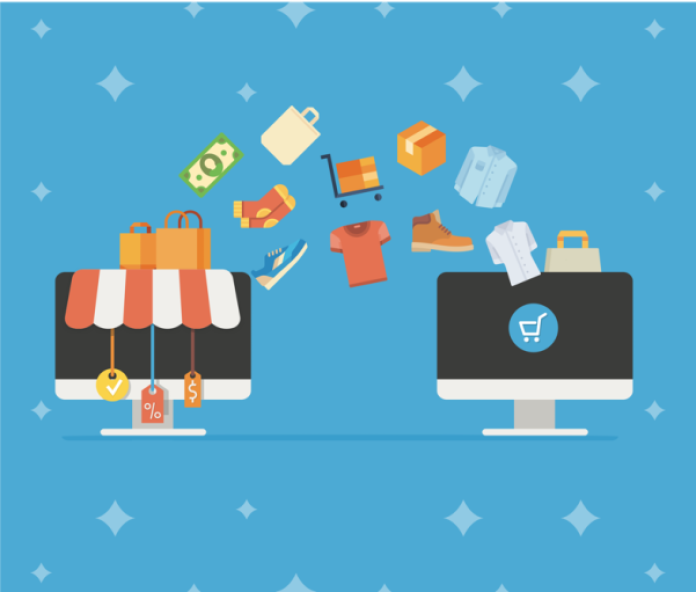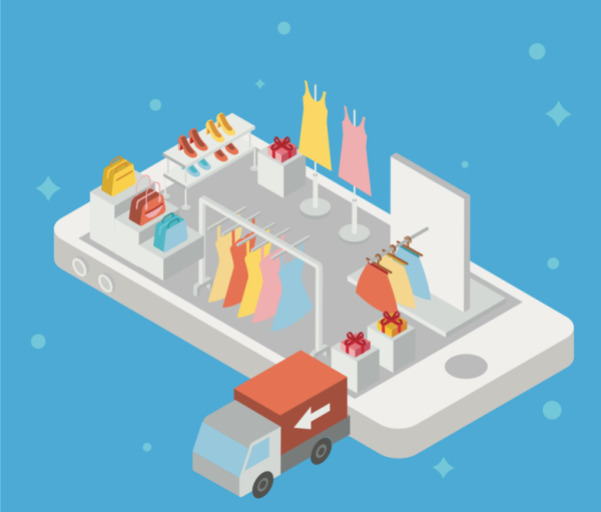What can be more fulfilling than running your very own clothes shop? Promoting your vision of what people should wear and living off of it is a real pleasure. Doing this can be as easy as making your own prints for t-shirts. Just like it is with art, there is always room for brand new ideas that people are going to love. Plus, today, you can take your business online.
If you’ve already got a brick-and-mortar store in place, this can be an awesome way to instantly blow up your coverage. If you don’t – a great way to start nonetheless. One way or the other, online clothing business is highly profitable.
The technicalities behind require a lot of thought of course. Depending on your budget, you’ll need to pick the specific way or framework to build your online shop. There are tons of ecommerce solutions varying in their quality and technical insight needed on your behalf. Some offer more pre-made but also more rigid and expensive features. Others let you create a highly customized retail platform but still need a lot of work invested in terms of programming.
Whatever suits the operation of your scale, in this article we will give you the 10 essential tips on how to get started with your ecommerce website.
Contents
1. Define your target audience and medium
The very first thing people who start own online clothing store business need to determine is their targeted customer. This is something that you might feel you are able to predict from your personal experience but such assumption would actually be wrong. A lot of entrepreneurs in clothing business tend to neglect this aspect, but you will have to pay special attention to basing your insight on solid information. Take a close look at who are the exact people you are selling to. What’s their age and lifestyle? After you’ve really come to understand your targeted market niche, keep following the trends and adapt your approach accordingly.
2. Create a USP
USP stands for Unique Selling Point, namely, why would people choose you over the other stores. The online market for clothes is highly competitive. How are you going to entice people with your stock? What makes it unique from among the myriad of other stores? Think about these things and what would give your brand a distinct image.

3. Deliver the delivery
Today, customers expect their apparel to have free shipping. This, again, has to do with competition. The trend applies to U.S. and cultural differences can depend, of course, but, in most developed countries, people would feel frustrated and abandon their carts if they learn they have to pay extra at checkout.
When selling internationally, fixed shipping price is a bummer. You should offer different kinds of shipment to your future clients. One for those who wish to get it quick and are willing to pay out of their nose for special delivery. Another one for those willing to cope with a slow but cheap shipment.
At this point, it will be great to think about the conditions of your return policy as well. You should know that many stores offer free returns and full refunds. For this reason, you ought to include the additional expenses into the general pricing and be done with it, but, of course, this would take same data to be done correctly.
4. Be mindful of the business logic in your website
This stage will be crucial to you choosing the best method upon which you are going to finally start building your platform. What you have to do is think about all the tasks you’ll have to go through when managing your website. The given set of scenarios can either be simple or time-consuming, depending on how well your tech solution can tackle it.
For instance, different WordPress plugins have different support to rapidly process huge numbers of payments. Some will allow you to mass-import all the payments while others will force you to process each one separately. If your site is less towards minimum viability and more towards scaling for years, you should consider this feature much like anything that will become too laborious as your business gets more momentum.

5. Consider the marketing activities
Don’t forget about the special offers you will present to your clients. All these campaigns you’ll need to account for in order to bring about the needed functionality when creating your web store. Think about the application of these marketing activities. Do you have plans to compensate for low times or will these be only seasonal? Offering extra items and bundles, offering price discounts, all these options require foresight in order to get them right.
6. Choose the correct technical implementation
Keeping the above technical nuances in mind, now is the time to decide how to really do it. When speaking generally, the more scalable and custom, the more expensive. Clothing brands that go for third-party frameworks usually choose Magento with plugins. It’s your most versatile average platform of choice that many established U.S. clothing companies successfully use for years. Shopify, on the other hand, will suit an MVP kind of a deal for startup or very small business.
However, if you’re looking to create an online clothes store that will scale for the years to come and utilize the full potential of intricate features, you will be better off investing into a full-scale ecommerce website instead of using a drag-and-drop online clothes store builder.
For this, you will have to hire seasoned web developers, but the payoff will be great. For instance, you’ll be able to integrate machine learning and offer precise suggested goods to complement those your visitors have previously browsed. You’ll also be able to set up retargeting towards those who have already bought from you and catch recurring customers by advertising to them. Finally, you won’t have to migrate and double your expenses when you find out your idea has taken off and you need to scale to manage so much demand.
7. Don’t forget mobile compatibility
Today, almost 50% of all the leads you get are obtained via mobile traffic. If your site is not adapted, you’re losing half the potential sales. Don’t neglect this aspect and work on the mobile version of your website. At least for the future, think about getting your own native app for mobile devices.

8. Pay special attention to the photos of your products
You wouldn’t believe it, but they tend to actually neglect this essential item. Store owners do realize it’s important, but they fail to tackle the issue with all due attention and resources it requires. One would sometimes create photos on their own, and then these photos end up looking poorly. Unless, you are a professional photographer, delegate this task to someone who is.
Mind that online clothes store photos come with special requirements. For instance, all items are planted on white background. Another consideration for product display is 3D model. This will actually work for footwear, as it would normally make sense to only spin a non-flat object. Generally speaking, this will yield a bonus for your credibility.
9. Don’t neglect the writing either
Yet another cornerstone element that businesses tend to fast-forward without paying the attention that is due. Good copy has more professional depth than it may seem at the first glance. It’s only second to visuals and best be done by specialists either.
The text has to be concise and highly informative. It’s hard to combine both of these aspects and gather enough substance to write a good landing page. Product descriptions are nuanced as well with a high degree of appeal to emotion.
10. Never stop testing new things
The launch doesn’t mean that your website is final. It’s only normal to iterate changes upon changes and find clever new ways to improve your overall sales funnel. This includes how you introduce new products and the different layouts you use to present them. All these pose some extra work on your part that you shouldn’t really try to avoid. Check the different templates for ecommerce website design and try seeing how they affect your conversion rates.
Don’t assume any outcomes without proof. There is a wide range of analytic solutions to make educated conclusions. The various heat mapping tools will grant you the insights on the main bottlenecks for your clients. Not only will you measure the exact bounce rate, you will also see the problematic areas where everything goes down as well as behaviors of your clients.
This should cover the most essential basics on building an online clothes store. It may seem daunting at first, but launching your web store will truly skyrocket your business. Bottom line – don’t take any aspect of your soon-to-be website for granted and give it to a niche professional. The power is in details.
Hope you enjoyed this piece. Don’t forget to check these 10 trends for internet clothing stores to stay in touch with the market change.



![How to Make an Anvil in Minecraft in 2024 [Easy Guide] minecraft seeds](https://i0.wp.com/www.geeksgyaan.com/wp-content/uploads/2022/02/minecraft-seeds.png?resize=100%2C70&ssl=1)

